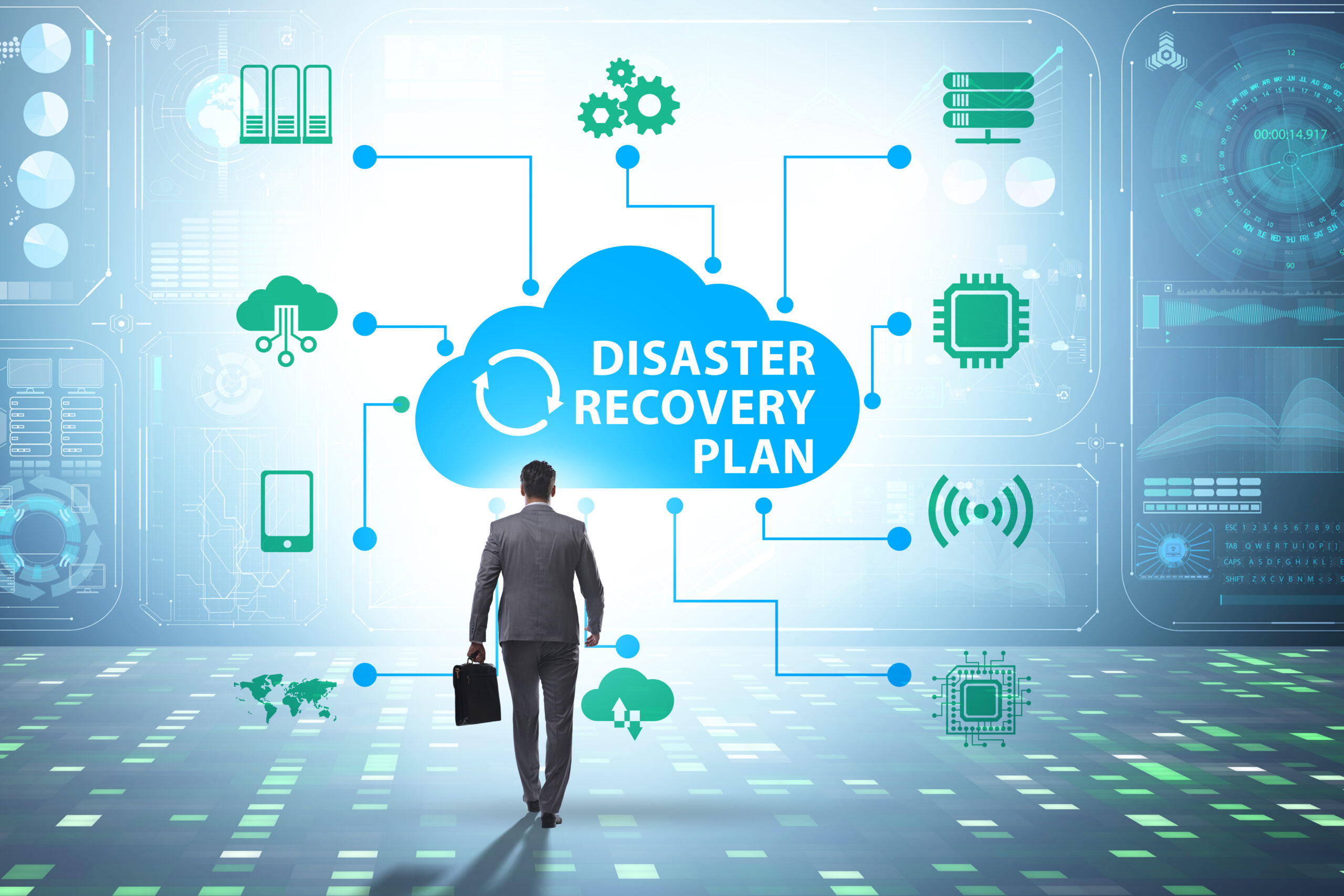The Disaster Recovery Process (Why You Need One)
The need for disaster recovery processes isn’t a matter of “if”, but rather “when”.
You see, an astonishing 96% of organizations worldwide have experienced operational downtime in the past three years. Quite a number of them are even hit by outages several times a year. And if you zeroed in on the most severe cases, the volume of victims would add up to a fifth of organizations – these are the ones who are substantially crippled by downtimes, to the point of incurring huge financial and reputational losses.
In terms of figures, we’re talking of an average of about 4.35 million in losses for companies that experience physical and digital data loss, with American organizations leading at $9.44 million.
Damages of such magnitude might, of course, make disasters seem like an exclusive problem for large enterprises. But, as it turns out, small businesses are the ones bearing the brunt of it. Not only is their case count more than double the numbers recorded by enterprises, but they also happen to make up a significant chunk of the 83% of organizations seeing multiple breaches every year.
The difference in disaster recovery outcomes is largely due to disparate approaches to disaster prevention and recovery processes. Whereas large enterprises invest heavily in protection and disaster recovery plans – including offsite and cloud backup services – the same cannot be said for small businesses. Many of them remain exceedingly vulnerable, and the problem is further compounded by their insufficient disaster recovery plans.
This has led to over 90% of small entities going out of business within two years of experiencing a disaster. The failure rate is particularly profound among companies operating without a disaster recovery plan.
The Basics of Disaster Recovery
The disaster recovery process is all about preparing for unexpected interruptions to your company’s operations. It involves identifying potential threats, creating a plan to mitigate those threats, plus regularly testing and updating the plan to ensure its effectiveness.
Such disasters come in many different forms. You could, for instance, lose both physical and digital business data due to natural disasters like hurricanes, floods, or fires. Even more common than that are data breaches, which often develop from cyberattacks. Otherwise, it’s also possible for system crashes to emanate from human errors such as accidental data deletion.
Each of these types of disasters requires a different mitigation response. Your organization could even adopt a dynamic approach by distributing its records across physical and cloud storage systems.
The Importance of Disaster Recovery Planning
In today’s digital landscape, data is one of the most valuable business assets. It informs decision-making, drives operations, and fuels growth.
On the flip side, however, this data is also pretty vulnerable. A single disaster could potentially wipe out years of valuable information, leading to insurmountable financial and reputational losses.
One way to safeguard your businesses is by sealing potential system loopholes with strong data storage security measures. But, it would be unwise to leave it at that, as there’s no such thing as a completely foolproof system.
Now, this is where disaster recovery planning steps in. It establishes a framework that you could fall back to in the event the safeguards fail to shield you from an impending threat.
And make no mistake about the whole process. Disaster recovery planning is not just about preparing for the worst — it is, rather meant to guarantee business continuity in the face of a catastrophe.
You can think of it as the lifebuoy that saves your business right at the nick of time, before it succumbs to adversity and drowns. More specifically, the disaster recovery process minimizes downtime, reduces data loss, plus safeguards against financial loss and legal repercussions.
If you hope to give your business the best fighting chance, you need a disaster recovery plan that addresses your entire IT inventory – including all the hardware and software. It should also provide data backup and verification procedures, through which critical data is regularly backed up off-site.
Another thing it ought to define is the recovery timelines, along with the corresponding logistics and timeframes for data transfer. We recommend developing a schedule that outlines how backed-up data will be retrieved in the event of a disaster, where it’ll be delivered, and the data encryption measures to be applied.
Your disaster recovery plan may also consider the lifecycle of your records. This is where you go beyond data storage and backup to include even the disposal procedures that’ll be followed once the data is no longer needed. The destruction method itself should be thorough and adequately secured to reduce the risk of data breaches.
Backup and Recovery Strategies
In the backup section of the disaster recovery plan, there are several strategies that businesses could employ, and each has its own merits:
Onsite backups
Onsite backups store copies of your data on local storage devices — such as hard drives or on-premises servers. They facilitate convenient disaster recovery, as the data is always readily accessible. Unfortunately, however, this physical accessibility tends to expose your data to the risks that come with physical disasters like fires or floods.
Offsite backups
Offsite data storage, on the other hand, holds your data in a physical location away from your primary business premises. This geographical separation safeguards sensitive files against disasters that could occur on your premises.
While it’s true that retrieving such data may require a bit more time compared to onsite backups, this is a small trade-off for the security and peace of mind you gain. You get to rest easy knowing that your data is safely isolated and ready to be transported back to your business location when the need arises.
Cloud backups
Cloud backups utilize remote web servers as the data storage medium. They offer a high level of flexibility, as data can be accessed and restored from any location with an internet connection.
Then as your business grows, you should be able to progressively upscale the storage capacity by demand.
Hybrid backups
Hybrid data storage is a strategic blend of onsite and offsite storage methods, meant to maximize the benefits of both. In this model, local storage provides immediate access, autonomy, and unrestricted control over data, whereas offsite copies offer a safety net against physical disasters that could impact your onsite data.
Testing and Maintenance
A disaster recovery plan on paper doesn’t cut it — the whole thing ought to be tested and proven. Each of these tests should simulate a disaster scenario, with subsequent recovery measures being implemented according to plan.
You could, for instance, try assuming that your primary data storage is compromised, and you need to retrieve your offsite backups. This should help in assessing the efficiency of your retrieval procedures and the reliability of your offsite storage provider.
By doing so, you get to identify and resolve any potential weaknesses in your disaster recovery plan. The test results may establish that the data retrieval procedures take a little longer than expected, or that some critical data backups are missing from your records storage facility
Another thing to consider is the maintenance of your disaster recovery plan. You should regularly review and update its variables according to any changes made to your company’s data, business processes, and personnel.
As your data footprint expands, for instance, your disaster recovery plan ought to be revisited and tweaked accordingly. You could try looking into the options for converting documents into electronic files and maybe securing the resultant data in government-compliant data centers.
Power Your Disaster Recovery Process With Specialized Records Management
Implementing all these disaster recovery measures can be a demanding task, requiring substantial investment in data storage infrastructure, technical expertise, and time. While this might not pose a challenge for large enterprises, small and medium-sized businesses often find it difficult to marshal the necessary resources and navigate the complexities involved.
With the support of Archive Corporation, though, businesses of all sizes – even those with limited budgets – can now establish their disaster recovery workflows on fully-equipped hybrid data storage environments. We’ve been in the business of data and document storage for almost 40 years, during which time we’ve developed affordable end-to-end records management solutions for small to medium-sized businesses.
Our mission is to sustain your disaster recovery processes with custom cloud backup, records storage, document logistics, and data management services. We’ll
Reach out today and let us help you protect your business against the risks of losing valuable data.




